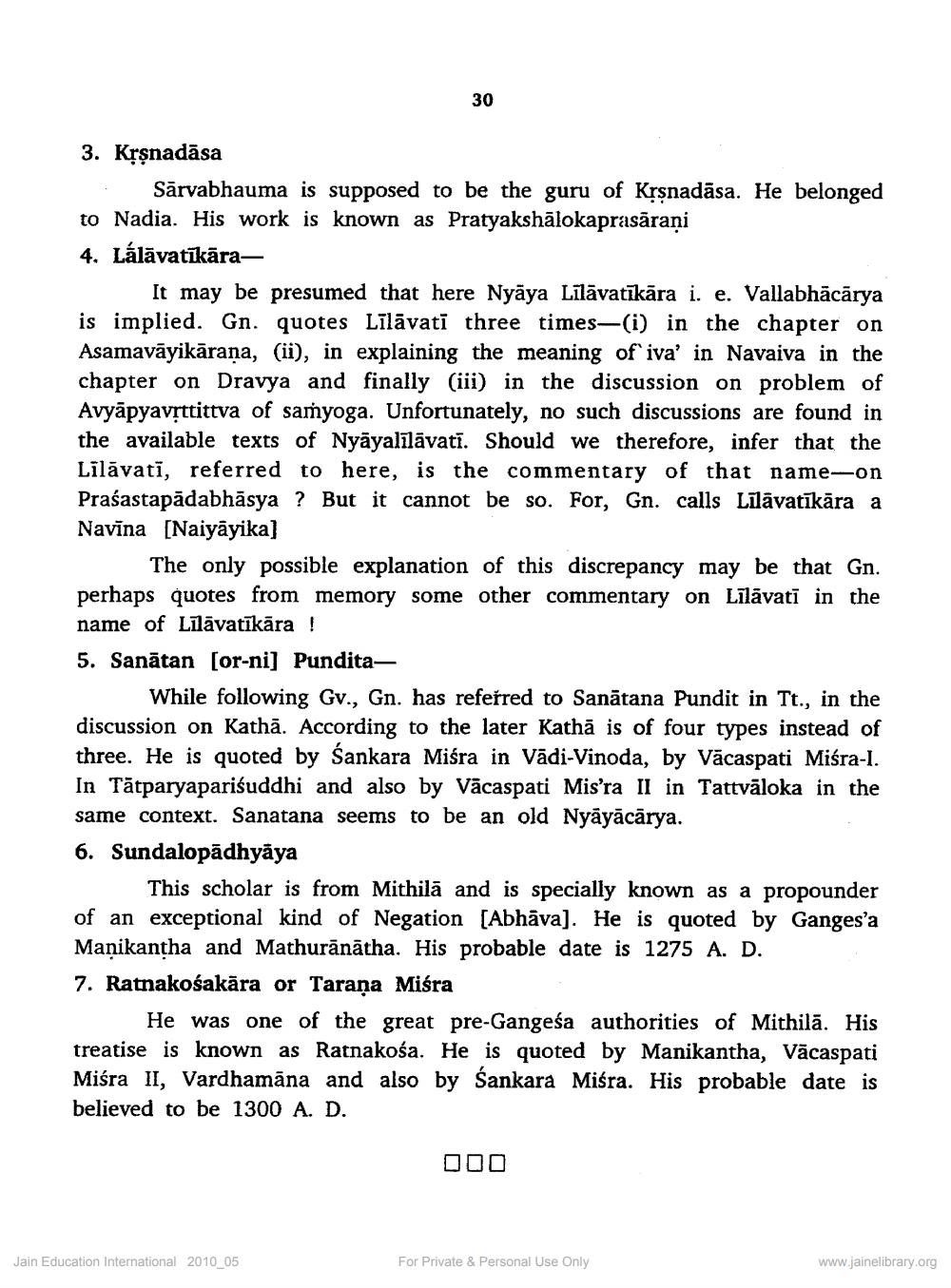________________
3. Krsnadāsa
Sārvabhauma is supposed to be the guru of Krsnadāsa. He belonged to Nadia. His work is known as Pratyakshālokaprasārani 4. Lálāvatīkāra
It may be presumed that here Nyāya Līlāvatīkāra i. e. Vallabhācārya is implied. Gn. quotes Līlāvati three times-(i) in the chapter on Asamavāyikārana, (ii), in explaining the meaning of iva' in Navaiva in the chapter on Dravya and finally (iii) in the discussion on problem of Avyāpyavịttittva of saṁyoga. Unfortunately, no such discussions are found in the available texts of Nyāyalīlāvati. Should we therefore, infer that the Lilāvatī, referred to here, is the commentary of that name-on Prasastapādabhāsya ? But it cannot be so. For, Gn. calls Līlāvatīkāra a Navina [Naiyāyika]
The only possible explanation of this discrepancy may be that Gn. perhaps quotes from memory some other commentary on Līlāvati in the name of Līlāvatīkāra ! 5. Sanātan [or-ni] Pundita
While following Gv., Gn. has referred to Sanātana Pundit in Tt., in the discussion on Kathā. According to the later Kathā is of four types instead of three. He is quoted by Sankara Miśra in Vādi-Vinoda, by Vācaspati Miśra-I. In Tātparyaparisuddhi and also by Vācaspati Mis'ra II in Tattvāloka in the same context. Sanatana seems to be an old Nyāyācārya. 6. Sundalopādhyāya
This scholar is from Mithilā and is specially known as a propounder of an exceptional kind of Negation [Abhāva). He is quoted by Ganges'a Manikantha and Mathurānātha. His probable date is 1275 A. D. 7. Ratnakośakāra or Tarana Miśra
He was one of the great pre-Gangesa authorities of Mithilā. His treatise is known as Ratnakośa. He is quoted by Manikantha, Vācaspati Miśra II, Vardhamāna and also by Sankara Misra. His probable date is believed to be 1300 A. D.
000
Jain Education International 2010_05
For Private & Personal Use Only
www.jainelibrary.org




